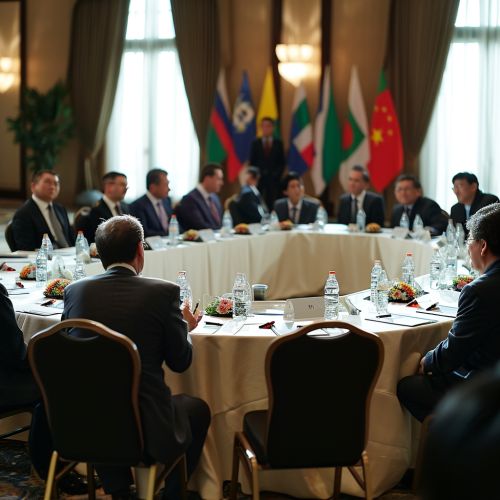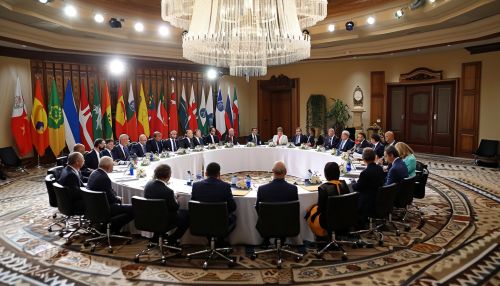Uruguay Round
Introduction
The Uruguay Round was the 8th round of multilateral trade negotiations (MTN) conducted within the framework of the General Agreement on Tariffs and Trade (GATT), spanning from 1986 to 1994 and embracing 123 countries as "contracting parties". The Round led to the creation of the World Trade Organization, with GATT remaining as an integral part of the WTO agreements. The broad mandate of the Round had been to extend GATT trade rules to areas previously exempted as too difficult to liberalize (agriculture, textiles) and increasingly important new areas previously not included (services, intellectual property, investment policy).


Background
The Uruguay Round began in September 1986, in Punta del Este, Uruguay. It was the largest and most extensive round to date, hoping to expand the world trading system to cover new areas, such as trade in services and intellectual property, and to reform trade in the sensitive sectors of agriculture and textiles. The round was supposed to conclude in December 1990, but the parties failed to reach a consensus by that deadline, and negotiations were extended until 1993.
Negotiations
The negotiations were divided into several areas of trade, each being handled by a different group. The areas were: market access; textiles and clothing; agriculture; Trade-Related Aspects of Intellectual Property Rights (TRIPS); Trade-Related Investment Measures (TRIMs); services; dispute settlement; and the creation of the WTO.
Market Access
The market access talks, which went into the tariff schedules of all participants, achieved an average reduction of one-third in the tariffs on industrial goods. The results of the negotiations, known as the "Final Act", were adopted at ministerial level in April 1994.
Textiles and Clothing
The Agreement on Textiles and Clothing (ATC) aimed to bring these sectors into the GATT framework, phasing out the existing Multi-Fibre Arrangement (MFA) that had excluded them.
Agriculture
In the agriculture negotiations, the European Union's Common Agricultural Policy came under attack, with the United States and other countries demanding a reduction in agricultural subsidies. The result was a compromise agreement on agriculture, the Agreement on Agriculture, which required developed countries to reduce their agricultural subsidies.
TRIPS
The TRIPS negotiations led to the creation of a new agreement under the auspices of the WTO, covering intellectual property rights. The agreement set out minimum standards of protection to be provided by each contracting party.
TRIMs
The TRIMs negotiations resulted in an agreement to prohibit certain measures that restrict foreign investment. The agreement covers investment measures that are related to trade in goods only.
Services
The services negotiations led to the creation of a new agreement, the General Agreement on Trade in Services (GATS). The agreement extended the multilateral trading system to the service sector, covering government measures affecting trade in services.
Dispute Settlement
The dispute settlement negotiations resulted in the creation of a more structured and legal process for resolving disputes between WTO members. The new dispute settlement system is based on clearly defined rules, with timetables for completing a case.
Creation of the WTO
The Uruguay Round negotiations also led to the creation of the WTO, which came into being on 1 January 1995. The WTO is a more structured and powerful organization than the GATT, with a broader mandate and a dispute settlement system.
Impact
The Uruguay Round has had a significant impact on world trade. It has led to a substantial reduction in tariffs on industrial goods and has brought sectors such as textiles, clothing, and agriculture more fully into the GATT system. It has also led to the creation of new agreements covering services, intellectual property, and investment measures.
